Common names: scarlet elf cup, scarlet elf cap, red cup, scarlet cup, moss cups, fairies’ baths
Scientific name: Sarcoscypha austriaca
Family: Sarcoscyphaceae
Fruiting season: early winter to early spring
Habitat: dead wood on the woodland floor
Mystical and cheery, the scarlet elf cup grows on decaying sticks and branches in damp spots and beneath leaf litter on the woodland floor. Their bright pops of colour brighten up even the darkest winter day.
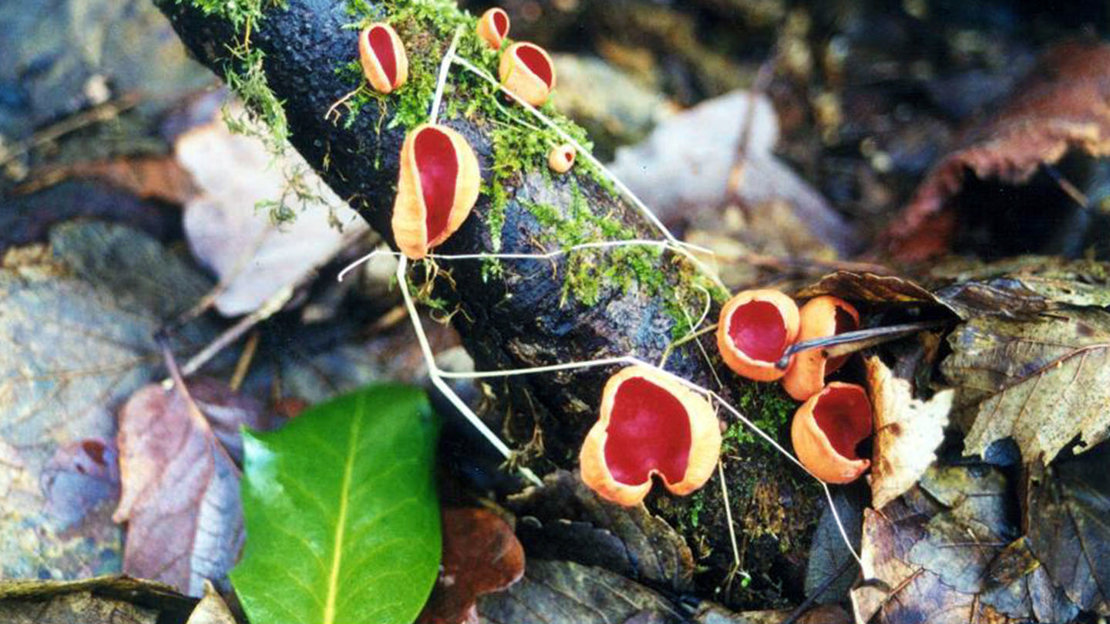
Common names: scarlet elf cup, scarlet elf cap, red cup, scarlet cup, moss cups, fairies’ baths
Scientific name: Sarcoscypha austriaca
Family: Sarcoscyphaceae
Fruiting season: early winter to early spring
Habitat: dead wood on the woodland floor
As the name suggests, the caps of the scarlet elf cup are cup-shaped and scarlet, though they can also be orange in colour. They have barely discernible stems which attach to the leaf litter, giving them the appearance of hollow bowls lying on the woodland floor or on decaying branches.
Fruit body: irregularly shaped cups that have a smooth, bright red inner surface and then a paler, downy outer surface. Cups are approximately 4cm across.
Stipe (stalk): short stem up to 3.5cm long that attaches to the leaf litter. This is mostly the same colour as the outer surface of the cup.
Gills/spores: white spore print.
Not to be confused with: the superficially identical species, Sarcoscypha coccinea.
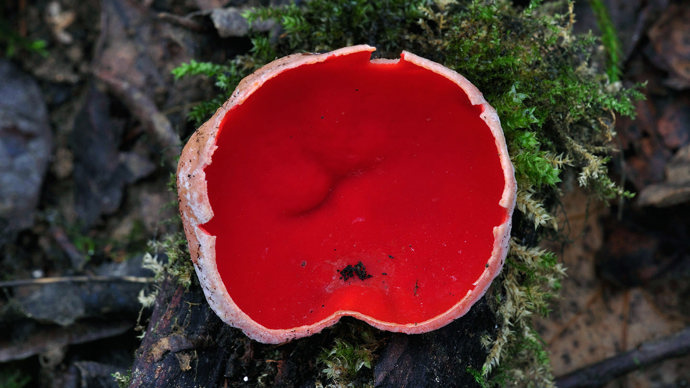
Credit: Caroline Eastwood / Alamy Stock Photo
Elf cup fungus is fairly widespread but uncommon in Britain and Ireland. It favours areas with high rainfall and can be seen on decaying sticks and branches – especially in damp areas of the woodland floor – and on ditch sides and stream banks.
Elf cup fungus is a popular food source for rodents and slugs.
They make a tiny puffing sound when they release their spores into the air.
In European folklore, it was said that wood elves drank morning dew from the cups.
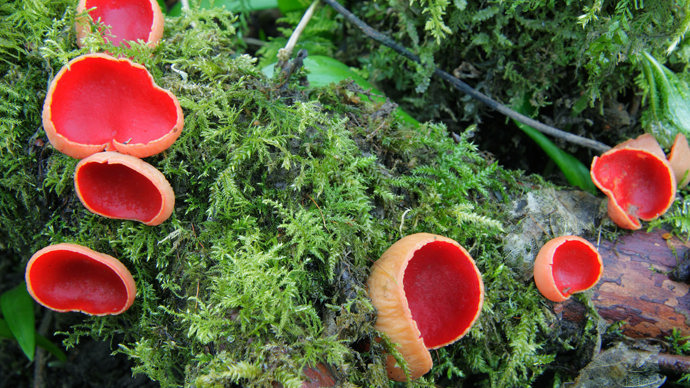
Credit: Art Directors & TRIP / Alamy Stock Photo
Though not poisonous, it is considered inedible. It has been used as a medicine by the Oneida Native Americans to stop bleeding and was placed under bandages and on the navels of newborns to promote healing.
In past times, elf cups were made into arrangements with moss and leaves and sold as table decorations.
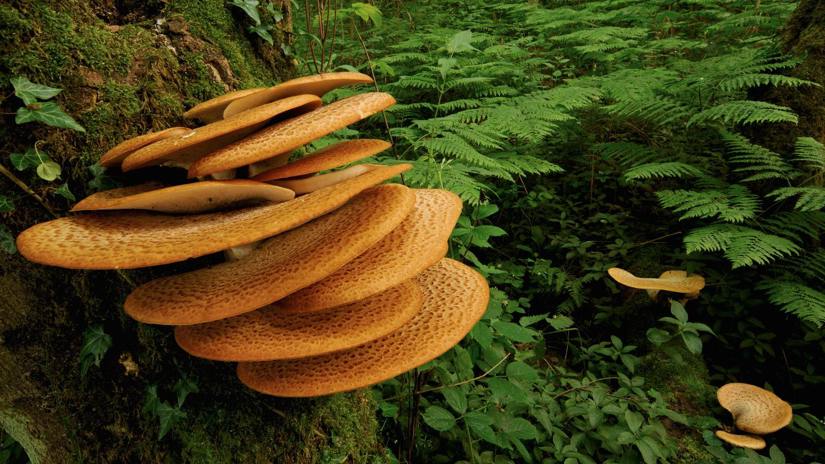
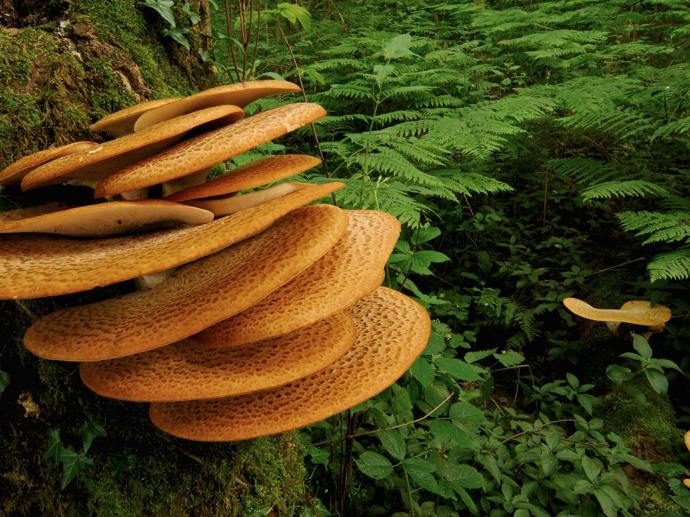
Amy Lewis • 21 Oct 2021
Bracket fungi, also known as shelf or polypore fungi, grow on both dead and living trees. Here we list some of the UK's more common and easily distinguished types to get to grips with.